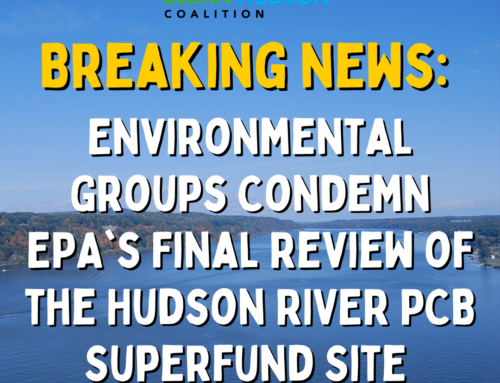For Immediate Release
Contact: Guillermo Martinez for Assemblywoman Naomi Rivera – 518-455-5844
Tina Posterli for Hudson Riverkeeper — 516-526-9371
Laura Haight for New York Public Interest Group – 518-436-0876
Manna Jo Greene for Hudson River Sloop Clearwater — 845-265 8080, ext.7113
Elliott Negin for Union of Concerned Scientists — 202-331-5439
Bronx Assemblywoman Naomi Rivera calls for Public Hearing to Examine the Emergency Plans of Local and State Governments in the Event of a Nuclear Accident at Indian Point Energy Center, National Experts, Riverkeeper, NYPIRG, Clearwater Join Call to Examine Emergency Response
BRONX, NEW YORK – (4/3/2012) — A year after one of the worst nuclear power plant catastrophes on the planet and 54 weeks after she first announced legislation mandating a comprehensive emergency plan to safeguard New Yorkers beyond a 10-mile radius of the Indian Point Energy Center, Assemblywoman Naomi Rivera is calling for a Statepublic hearing to examine evacuation and emergency preparedness in case of a radiation leak at the nuclear facility.
In a letter, released to the public today, to senior members of the legislature who chair committees with direct oversight over emergency planning and preparedness of state and local governments, Assemblywoman Rivera wrote, “Recently the Nuclear Regulatory Commission denied a request for the operators of Indian Point Energy Center to provide an emergency preparedness and evacuation plan for the surrounding communities which are home to 20 million Americans in a tri-state area. In addition, there are serious questions as to the ability of local, state and federal government agencies to communicate and react to a nuclear emergency.”
According to Doctor Irwin Redlener, Director, National Center for Disaster Preparedness Columbia University Mailman School of Public Health, “Safe operations of a nuclear power plant must include detailed response plans that will protect thepublic in the event of a catastrophic emergency. The Indian Point facility does not satisfy this very basic requirement because, among other problems, should there be a large-scale radiation release, the evacuation plans designed to move people out of harms way are inadequate to the extreme. Evacuation planning for Indian Point remains inconsistent with a real understanding of population density, likely area of contamination, human behavior expectations, transportation realities or readiness of host communities.”
According to Rivera, “As scrutiny of nuclear energy facilities across the nation grows and with the revelation that the Indian Point nuclear power plant is located over fault lines that make it vulnerable to a strong earthquake, the public is entitled to know that New York has in place a comprehensive and well-prepared plan that can save the lives of millions of New Yorkers, including those downwind of the Indian Point nuclear power plant.” The Bronx is 24 miles from Indian Point and almost all ofNew York Cityis within 50 miles of the nuclear reactors.
“The Fukushima crisis clearly demonstrated that radioactive releases from nuclear plant accidents can have significant impacts well beyond the 10-mile zone currently covered by emergency planning requirements,” said Dr. Edwin Lyman, senior scientist in the Union of Concerned Scientists’ Global Security Program. “Computer modeling performed by the Union of Concerned Scientists in 2004 predicted that a severe accident or terrorist attack at Indian Point could expose New York City’s children to high levels of radioactive iodine and could even trigger the need for the evacuation of Manhattan. The NRC needs to overcome its pervasive attitude of denial and take action now to protect the millions of people who are being exposed to needless risk.”
“A review of the adequacy of the emergency response plans for Indian Point is long overdue,” said Laura Haight, Senior Environmental Associate with NYPIRG. “New Yorkers will be shocked to learn how little protection they have in the event of a nuclear disaster. We applaud Assemblymember Naomi Rivera for calling for this hearing.”
Hudson River Sloop Clearwater shares Assemblywoman Rivera’s concern and supports her proposed legislation. “Given the fact Indian Point Nuclear Power Plant is located at the intersection of two earthquake faults, as identified by a 2008 study by Columbia University’s Lamont-Doherty Earth Observatory, and that ’spent’ but still highly radioactive fuel rods are stored on-site in unprotected fuel pools, a much more robust emergency plan is needed,” said Manna Jo Greene, Clearwater’s Environmental Director. “In addition to the chaos and gridlock that would rapidly ensue throughout the greater metropolitan area, our emergency medical response system would quickly be overwhelmed in the event of a radiological disaster,” she added.
“We cannot wait until a potentially deadly catastrophe involving the accidental release of radiation by the Indian Point nuclear power plant before we realize that New York State does not have available the first-line-of-defense resources that can save the lives of millions of our fellow residents, including millions of children,” stated Assemblywoman Rivera, member of the Assembly Standing Committee on Health.
Phillip Musegaas, Hudson River Program Director at Riverkeeper, stated, “Riverkeeper joins Assemblywoman Rivera in demanding better for New Yorkers. The 10-mile emergency plan New Yorkers have in case of a disaster at Indian Point is wholly insufficient and gives no meaningful thought to the 20 million of us who would be affected. Assemblywoman Rivera is right to call out the Nuclear Regulatory Commission to develop a real plan for evacuation, an issue that the agency won’t even allow into Indian Point’s relicensing hearing.”
“New York must learn from the tragic events taking place inJapan. We need to take action today and expand the disaster and evacuation plans from the current 10-mile radius of Indian Point power plant,” Rivera said.
In her letter to colleagues in the legislature, Rivera, a member of the Assembly leadership and the Assembly Steering Committee wrote, “While current federal requirements mandate a 10-mile radius action plan in the case of an emergency at the nuclear power plant, New Yorkers are absolutely unaware of any such plan. Simultaneously, logic and historical precedence dictate that the proliferation of any radiation potentially released will not be limited to 10 miles of Indian Point Energy Center. In fact, within 5 days of the nuclear catastrophe in Fukushima, Japan, dangerous levels of radiation had traveled 160 miles and hovered over Tokyo, prompting the United States military to issue potassium iodide pills to armed forces and their families and ordering American military ships out of Tokyo ports to avoid contamination.”
Legislation by Assemblywoman Rivera mandating that New York stockpile potassium Iodide pills and calling for a detailed emergency plan for their distribution in case of a nuclear accident was unveiled over a year ago on March 16, 2011. The legislation is currently pending in Committee (A.7426B).
Rivera added, “New York City and its nine million residents are downwind of Indian Point. Surrounding counties and neighboring states are the home of almost 11 million more Americans. There is no logical reason forNew York to not have a proper stockpile of potassium iodide pills on hand and a tested mechanism for their mass distribution in case of a nuclear fall-out emergency to prevent thyroid cancer.”
The thyroid gland needs iodine to produce hormones that regulate the body’s energy and metabolism. The thyroid absorbs available iodine from the bloodstream. The thyroid gland cannot distinguish between stable (regular) iodine and radioactive iodine and will absorb whatever it can. According to Rivera, “In babies and children, the thyroid gland is one of the most radiation sensitive parts of the body.” Potassium iodide protects the thyroid from radioactive iodine from all sources – air, food, milk, and water.
# # #





